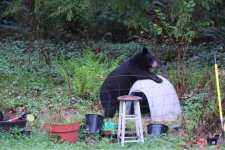Baedeker was already able to state, in that early guide to Switzerland, that places like the Rigi, the Brünig and the Scheideck were on ‘‘beaten tracks.’’ By the 1880s, Switzerland was estimated to be receiving a million visitors a year. Travelers tend to go where other travelers have gone, and perhaps this is part of the reason travel photography remains in thrall to the typical. When you do visit Zurich or Cape Town or Bangkok, they are very much alike: The amusement parks have striking similarities, the cafes all play the same Brazilian music, the malls are interchangeable, kids on the school buses resemble one another and the interiors of middle-class homes conform to the same parameters.
This doesn’t mean the world is uninteresting. It only means that the world is more uniform than most photo essays acknowledge, and that a lot of travel photography relies on an easy essentialism. I like Italo Calvino’s idea of ‘‘continuous cities,’’ as described in the novel ‘‘Invisible Cities.’’ He suggests that there is actually just one big, continuous city that does not begin or end: ‘‘Only the name of the airport changes.’’ What is then interesting is to find, in that continuity, the less-obvious differences of texture: the signs, the markings, the assemblages, the things hiding in plain sight in each cityscape or landscape. This is what outstanding photographers are able to do, and it is the target the rest of us chase.
The question I confronted in Switzerland is similar to that confronted by any camera-toting visitor in a great landscape: Can my photograph convey an experience that others have already captured so well? The answer is almost always no, but you try anyway. I might feel myself to be a singular traveler, but I am in fact part of a great endless horde. In the 1870s, Mark Twain was already complaining: ‘‘Now everybody goes everywhere; and Switzerland, and many other regions which were unvisited and unknown remotenesses a hundred years ago, are in our days a buzzing hive of restless strangers.’’
But ambition always comes to darken your serenity. Technically proficient mountain pictures were good, but I also had to develop my own voice. In photography, as in writing, there’s no shortcut to finding that voice. I could not decide ahead of time that I would take only ugly pictures or only beautiful ones, or that everything would be in focus or blurred, or that I would use only color or only black and white. I had been thinking about landscape, I had been exploring color film for a few years, I was drawn to abstraction, and a certain gentle surrealism to be found in the attitude of objects. But there then followed a situational focus, a sensitivity to what the environment gave me.





